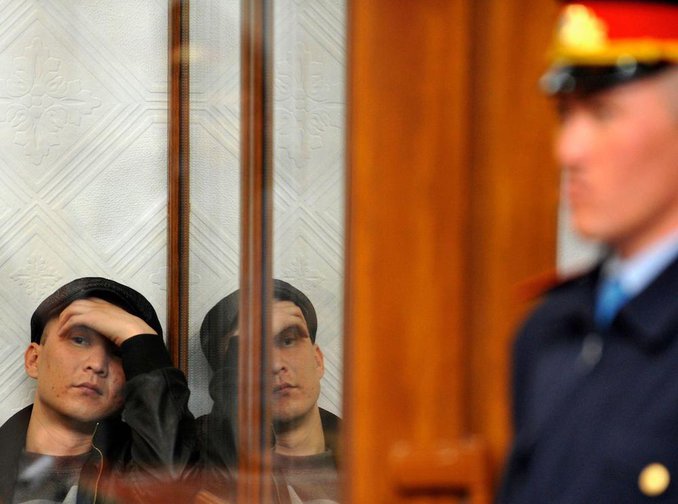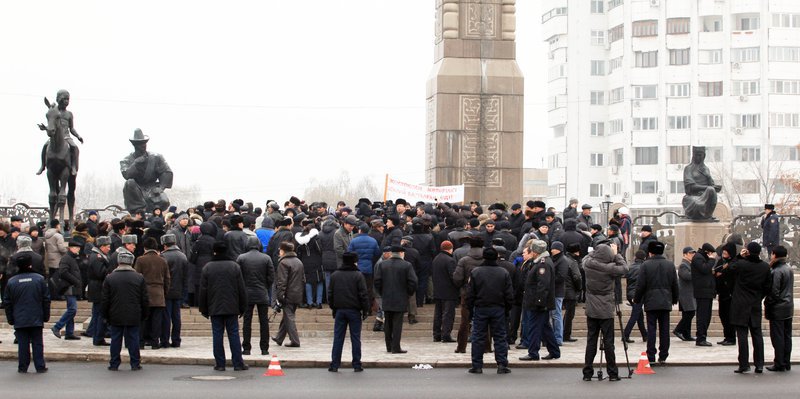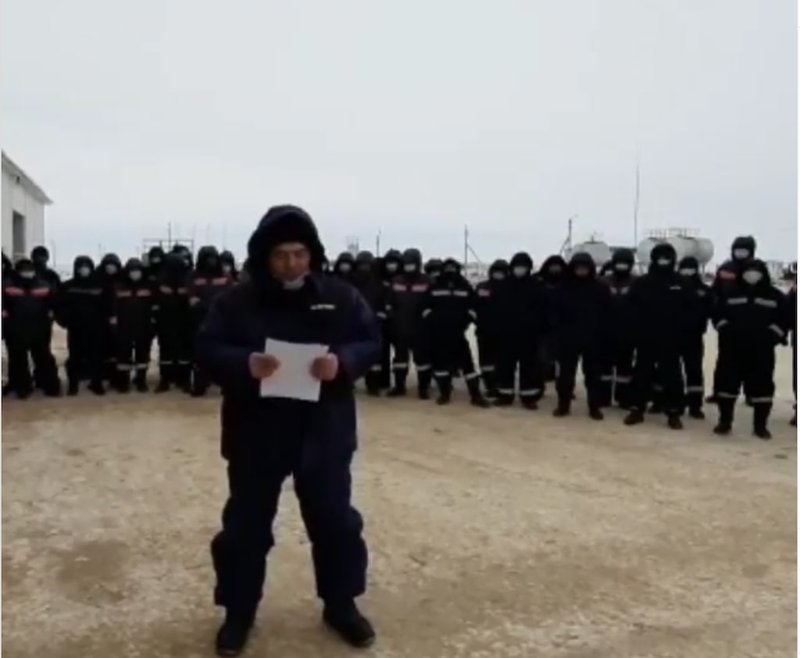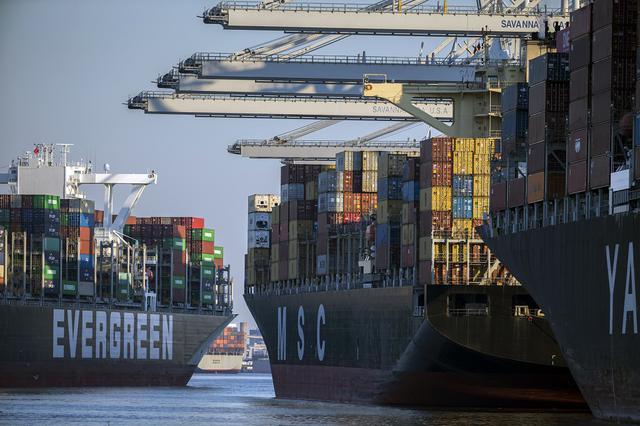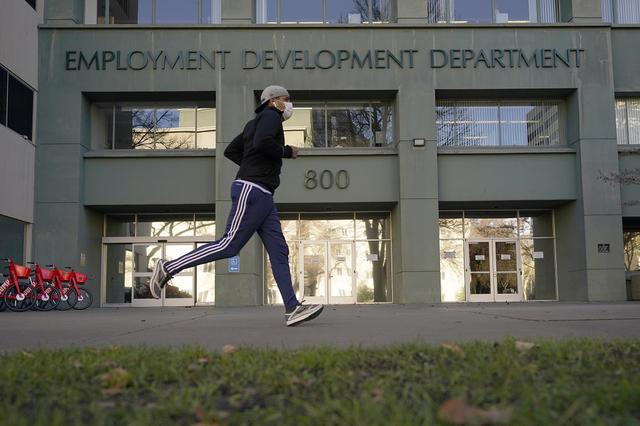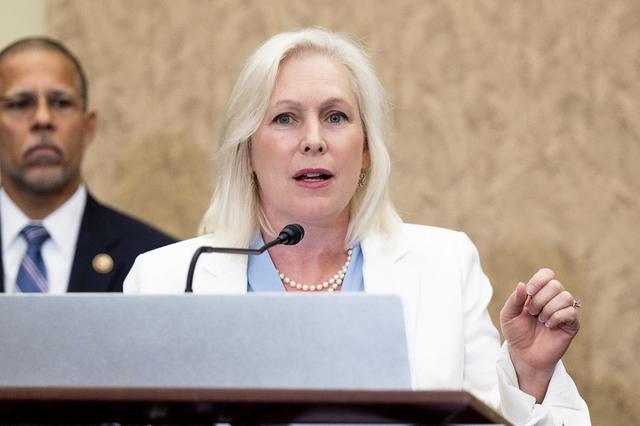Women factory workers took to the streets and catalysed
a mass movement
Ko Maung
15 December 2021, 7.00am

Anti-coup protestors in Myanmar |
Kaung Zaw Hein/Sipa USA/Alamy Stock Photo. All rights reserved
A year before the February 2021 military coup in Myanmar, striking workers from the Tai Yi shoe factory protested in front of their workplace to demand an increase in their daily wages. To raise their spirits, the workers sang the revolutionary anthem, ‘Thway Thitsar’.
In Myanmar’s Spring Revolution, the mass movement against the 2021 coup, ‘Thway Thitsar’ could be heard all over the country. “The present is critical, brothers and sisters. We must have solidarity.” A regular feature of workers’ protests, the anthem had now become part of the revolutionary movement. I say this not to highlight the song itself, but to call attention to the history of worker organising and struggle in Myanmar – a history that laid the groundwork for the Spring Revolution. Simply put, had workers not previously organised unions inside their factories, the protests that catalysed the Spring Revolution would not have happened. The February 6 protests ignited the anger of people across the country and led to nation-wide protests in the days that followed.
A history of worker organising
In 2011, as part of a wider reform process, trade unions were legalised in Myanmar after close to 50 years of being prohibited. Labour rights organisations and union federations sought to inform workers of their legal right to association. But it was workers themselves who organised unions in their workplaces. In most cases, this occurred following a workplace dispute that coalesced into a collective struggle to better wages or working conditions. With support, at times, from outside activists, hundreds of thousands of workers in the industrial zones around Yangon, Myanmar’s largest city, established workplace unions in just 10 years.
Union drives in the factories often began with workers wearing union t-shirts and red headbands, or engaging in sit-down strikes. If the employer refused their demands, the workers would organise a protest inside the factory or picket to disrupt production. These steps are simple. The objectives are clear. But union organisers in the factories had to work hard to mobilise their fellow workers. Factory-level union leaders needed to reassure workers that if problems arose, union leaders would take responsibility. And by organising campaigns, factory union leaders risked being dismissed or attacked by thugs. There have been many such incidents over the past 10 years.
It has only been when workers have gone on strike that they have gained power to influence factory management.
Government mechanisms established to resolve workers’ grievances and address workplace abuse have been ineffective. Strikes have therefore been the most successful tactic for factory-level unions to achieve workers’ legal rights in the workplace. It has only been when workers have gone on strike that they have gained power to influence factory management. In this way, unionised workers have won the right to participate in workplace decision-making. Factory-level unions have put a stop to forced overtime and workplace harassment. And unionised workers have compelled managers to go through worker-controlled committees to resolve disputes.
In Myanmar, there are two trade union federations that privilege the strike as a tactic for advancing workers’ demands. These are the All Burma Federation of Trade Unions (ABFTU) and the Federation of General Workers Myanmar (FGWM). Twenty-one factory-level unions founded the second of these in the Hlaingtharyar industrial zone, on the outskirts of Yangon, in September 2019. Since then membership has steadily increased. It was FGWM workers who led the anti-coup protests in Yangon and catalysed the Spring Revolution. Thousands took to the streets. In response, people across the country were moved to support the protesting workers and to join the mass movement against military rule.
From the February coup to a mass movement
Military authorities shut down Myanmar’s internet soon after the coup d’état on 1 February. Recalling that first day, Ma*, a factory-level union leader, told me, “I couldn’t believe it when I heard. But later, I realised it was true. Our president and Daw Aung San Suu Kyi had been arrested.” Civil society organisations, including labour rights groups and unions, denounced the coup, issuing a joint statement demanding that political prisoners be released and that the results of the 2020 election be honoured.
FGWM issued its own, similar statement, and later joined with several groups to establish the Anti-Junta Mass Movement Committee. Other democratic forces were also organising against military rule. The day after the coup, doctors employed as civil servants in the Ministry of Health initiated a civil disobedience movement by refusing to work in government hospitals. And ordinary people across the country began hitting pots and pans each night at 8:00 pm in protest.
Factory workers faced violent retaliation because of their role in mobilising protestors.
Faced with this groundswell of anger, conservative social influencers and moderate politicians began spreading a rumour that street protests would give the military junta justification to hold onto power. The claim, which was untrue, was that the military could legally hold power for 72 hours under Myanmar law. During this time it would have to inform the United Nations of the reason for the coup and present the president’s signature accepting a transfer of power. Failure to do so, it was claimed, would nullify the coup and require a transfer of power back to civilian authorities. Street protests would thus ostensibly give the military justification for holding onto power. Even people opposed to the coup believed this erroneous claim, and some politicians in the ousted National League for Democracy urged to people to remain in their homes. The result was that, in the days after the coup, many people became wary of taking to the streets to protest.
Worker organisers and factory-level union leaders in FGWM still wanted to take action. First they initiated anti-coup campaigns inside the factories using the tactics they normally reserved for pressuring their employers: workers wore their union uniforms, issued statements denouncing the coup, and sang revolutionary songs during their lunch break. They then decided that, if at least 3000 members agreed, FGWM would mobilise a protest. “When we had all arrived at the factory to start our day, I called a meeting as chair of the factory union with union members to discuss opinions regarding a protest,” Ma recalled. “I explained that under a military dictatorship we would lose our rights and that there would not even be workers’ unions in the factories. All the workers agreed to participate in the protest.”
In the end, even non-union workers joined the protest. On the morning of 6 February, around 4000 workers rode factory trucks from the Hlaingtharyar industrial zone to three locations in downtown Yangon. The vast majority were women in their late teens and twenties. One participant told me she would never forget her experiences that day, and she was grateful to the union leaders who safely returned the workers to their dormitories that night. Chanting slogans in downtown Yangon with their lunchboxes in hand, these protestors made it clear that they had come on their own volition as oppressed and exploited workers from garment factories on Yangon’s industrial outskirts to take their stand against military rule.
A debt that must not be forgotten
Factory workers faced violent retaliation because of their role in mobilising protestors and in catalysing the mass movement against military rule. On 14 March, the military and police killed at least 58 people in the Hlaingtharyar industrial zone. Politicians in Myanmar must surely know the debt that they owe to the workers who led the protests against military rule and who sacrificed so much as a result.
However, some commentators have instead claimed that the 6 February protests were led by high-profile politicians and activists, as though workers could not organise themselves. This is a misrepresentation of history. It neglects not only the role of workers in organising the protests, but also the self-organised struggles of workers in the 10 years of Myanmar’s so-called democratic transition. During those years, workers had to organise and strike to secure their livelihoods and their legal rights. Since the coup, workers in Myanmar have risked their lives in the struggle for democracy. This must not be forgotten.
* Ma is a pseudonym to protect their anonymity.
This article is part of a series of articles resulting from an independent research project on worker organising in Myanmar and produced with financial support from the Livelihoods and Food Security Fund (LIFT). The views expressed herein should not be taken to reflect the official opinion of LIFT or LIFT donors. Additional editorial support, translation, and research assistance was provided by Brown University's Center for Human Rights and Humanitarian Studies and the Center for the Study of Slavery and Justice.
Ko Maung
15 December 2021, 7.00am

Anti-coup protestors in Myanmar |
Kaung Zaw Hein/Sipa USA/Alamy Stock Photo. All rights reserved
A year before the February 2021 military coup in Myanmar, striking workers from the Tai Yi shoe factory protested in front of their workplace to demand an increase in their daily wages. To raise their spirits, the workers sang the revolutionary anthem, ‘Thway Thitsar’.
In Myanmar’s Spring Revolution, the mass movement against the 2021 coup, ‘Thway Thitsar’ could be heard all over the country. “The present is critical, brothers and sisters. We must have solidarity.” A regular feature of workers’ protests, the anthem had now become part of the revolutionary movement. I say this not to highlight the song itself, but to call attention to the history of worker organising and struggle in Myanmar – a history that laid the groundwork for the Spring Revolution. Simply put, had workers not previously organised unions inside their factories, the protests that catalysed the Spring Revolution would not have happened. The February 6 protests ignited the anger of people across the country and led to nation-wide protests in the days that followed.
A history of worker organising
In 2011, as part of a wider reform process, trade unions were legalised in Myanmar after close to 50 years of being prohibited. Labour rights organisations and union federations sought to inform workers of their legal right to association. But it was workers themselves who organised unions in their workplaces. In most cases, this occurred following a workplace dispute that coalesced into a collective struggle to better wages or working conditions. With support, at times, from outside activists, hundreds of thousands of workers in the industrial zones around Yangon, Myanmar’s largest city, established workplace unions in just 10 years.
Union drives in the factories often began with workers wearing union t-shirts and red headbands, or engaging in sit-down strikes. If the employer refused their demands, the workers would organise a protest inside the factory or picket to disrupt production. These steps are simple. The objectives are clear. But union organisers in the factories had to work hard to mobilise their fellow workers. Factory-level union leaders needed to reassure workers that if problems arose, union leaders would take responsibility. And by organising campaigns, factory union leaders risked being dismissed or attacked by thugs. There have been many such incidents over the past 10 years.
It has only been when workers have gone on strike that they have gained power to influence factory management.
Government mechanisms established to resolve workers’ grievances and address workplace abuse have been ineffective. Strikes have therefore been the most successful tactic for factory-level unions to achieve workers’ legal rights in the workplace. It has only been when workers have gone on strike that they have gained power to influence factory management. In this way, unionised workers have won the right to participate in workplace decision-making. Factory-level unions have put a stop to forced overtime and workplace harassment. And unionised workers have compelled managers to go through worker-controlled committees to resolve disputes.
In Myanmar, there are two trade union federations that privilege the strike as a tactic for advancing workers’ demands. These are the All Burma Federation of Trade Unions (ABFTU) and the Federation of General Workers Myanmar (FGWM). Twenty-one factory-level unions founded the second of these in the Hlaingtharyar industrial zone, on the outskirts of Yangon, in September 2019. Since then membership has steadily increased. It was FGWM workers who led the anti-coup protests in Yangon and catalysed the Spring Revolution. Thousands took to the streets. In response, people across the country were moved to support the protesting workers and to join the mass movement against military rule.
From the February coup to a mass movement
Military authorities shut down Myanmar’s internet soon after the coup d’état on 1 February. Recalling that first day, Ma*, a factory-level union leader, told me, “I couldn’t believe it when I heard. But later, I realised it was true. Our president and Daw Aung San Suu Kyi had been arrested.” Civil society organisations, including labour rights groups and unions, denounced the coup, issuing a joint statement demanding that political prisoners be released and that the results of the 2020 election be honoured.
FGWM issued its own, similar statement, and later joined with several groups to establish the Anti-Junta Mass Movement Committee. Other democratic forces were also organising against military rule. The day after the coup, doctors employed as civil servants in the Ministry of Health initiated a civil disobedience movement by refusing to work in government hospitals. And ordinary people across the country began hitting pots and pans each night at 8:00 pm in protest.
Factory workers faced violent retaliation because of their role in mobilising protestors.
Faced with this groundswell of anger, conservative social influencers and moderate politicians began spreading a rumour that street protests would give the military junta justification to hold onto power. The claim, which was untrue, was that the military could legally hold power for 72 hours under Myanmar law. During this time it would have to inform the United Nations of the reason for the coup and present the president’s signature accepting a transfer of power. Failure to do so, it was claimed, would nullify the coup and require a transfer of power back to civilian authorities. Street protests would thus ostensibly give the military justification for holding onto power. Even people opposed to the coup believed this erroneous claim, and some politicians in the ousted National League for Democracy urged to people to remain in their homes. The result was that, in the days after the coup, many people became wary of taking to the streets to protest.
Worker organisers and factory-level union leaders in FGWM still wanted to take action. First they initiated anti-coup campaigns inside the factories using the tactics they normally reserved for pressuring their employers: workers wore their union uniforms, issued statements denouncing the coup, and sang revolutionary songs during their lunch break. They then decided that, if at least 3000 members agreed, FGWM would mobilise a protest. “When we had all arrived at the factory to start our day, I called a meeting as chair of the factory union with union members to discuss opinions regarding a protest,” Ma recalled. “I explained that under a military dictatorship we would lose our rights and that there would not even be workers’ unions in the factories. All the workers agreed to participate in the protest.”
In the end, even non-union workers joined the protest. On the morning of 6 February, around 4000 workers rode factory trucks from the Hlaingtharyar industrial zone to three locations in downtown Yangon. The vast majority were women in their late teens and twenties. One participant told me she would never forget her experiences that day, and she was grateful to the union leaders who safely returned the workers to their dormitories that night. Chanting slogans in downtown Yangon with their lunchboxes in hand, these protestors made it clear that they had come on their own volition as oppressed and exploited workers from garment factories on Yangon’s industrial outskirts to take their stand against military rule.
A debt that must not be forgotten
Factory workers faced violent retaliation because of their role in mobilising protestors and in catalysing the mass movement against military rule. On 14 March, the military and police killed at least 58 people in the Hlaingtharyar industrial zone. Politicians in Myanmar must surely know the debt that they owe to the workers who led the protests against military rule and who sacrificed so much as a result.
However, some commentators have instead claimed that the 6 February protests were led by high-profile politicians and activists, as though workers could not organise themselves. This is a misrepresentation of history. It neglects not only the role of workers in organising the protests, but also the self-organised struggles of workers in the 10 years of Myanmar’s so-called democratic transition. During those years, workers had to organise and strike to secure their livelihoods and their legal rights. Since the coup, workers in Myanmar have risked their lives in the struggle for democracy. This must not be forgotten.
* Ma is a pseudonym to protect their anonymity.
This article is part of a series of articles resulting from an independent research project on worker organising in Myanmar and produced with financial support from the Livelihoods and Food Security Fund (LIFT). The views expressed herein should not be taken to reflect the official opinion of LIFT or LIFT donors. Additional editorial support, translation, and research assistance was provided by Brown University's Center for Human Rights and Humanitarian Studies and the Center for the Study of Slavery and Justice.
Workers’ rights in Myanmar: a decade of fragile progress comes under threat
Labour protections were insufficient before the coup. Now the junta is rolling them back
Benjamin Harkins
13 December 2021
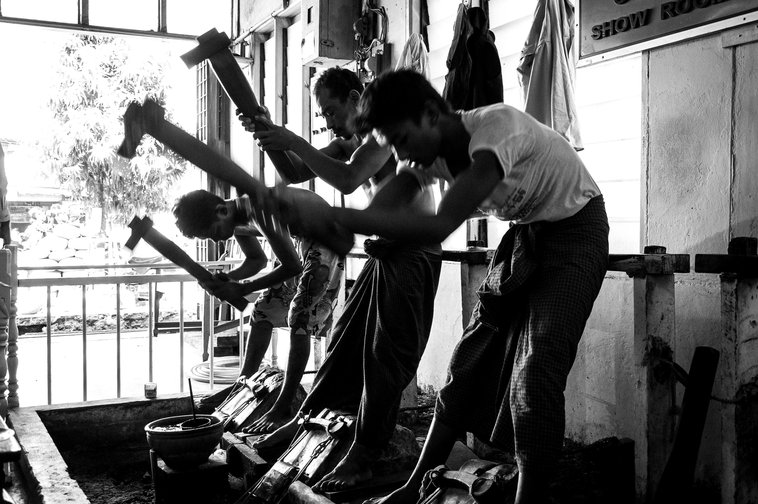
Making gold leaf in Myanmar |
Matteo Cozzi/Alamy Stock Photo. All rights reserved
Since 1962, workers’ rights in Myanmar suffered decades of abuse and neglect under military rule, creating a labour market where basic protections were neither adequately established by law nor respected in practice. At the same time, underdevelopment caused by rampant cronyism, isolation from the international community, and a regime of strict economic sanctions meant that not enough jobs were available for the country’s 23 million workers.
Following the election of a nominally civilian government in 2010, a wide-ranging political and economic liberalisation process was initiated, including intensive efforts to reform Myanmar’s outdated, contradictory, and vague labour laws. Among the dozens of legislative changes were the legalisation of worker organisations, the establishment of dispute resolution mechanisms, the introduction of a minimum wage, the expansion of social security coverage, and stricter prohibitions on forced labour.
Because of government and private sector sensitivities about research on working conditions, few independent, large-scale studies were permitted since the reforms began more than 10 years ago. Just months before the military returned to power through a coup d’etat in February 2021, a United Nations survey was completed with more than 2,400 workers employed in low-wage jobs to help fill the knowledge gap – assessing how effective the improved labour governance framework has been in ensuring decent working conditions. The key findings of the research are outlined below.
Suppression of worker organising
Outlawed for over half a century, trade unions were only legalised in Myanmar in 2011 under the Labour Organisation Law. However, the trade union density rate in Myanmar remains very low in comparison to other countries, representing just 1% of the labour force. Major obstacles to registering worker organisations continue to deny many workers their right to freedom of association.
Joining a worker organisation continues to carry significant personal risk in Myanmar. Trade union activity in many of Myanmar’s industrial zones has encountered fierce resistance and reprisals from employers. Consequently, many workers are intimidated by the potential consequences of participating in a union despite their legal right to do so.
Suppression of industrial actions by employers and police, in some cases violently, has frequently prevented collective bargaining from taking place.
Collective bargaining is still at a nascent stage in Myanmar and most agreements have been reached reactively through dispute resolution. Workers must resort to strikes to assert their labour rights largely because the normal channels for negotiation with employers are non-existent or dysfunctional. Furthermore, suppression of industrial actions by employers and police, in some cases violently, has frequently prevented collective bargaining from taking place.
Entrenched gender inequality
The heavily gendered division of labour continues to pose a major obstacle to women’s empowerment in Myanmar. Women are disproportionately responsible for performing unpaid household work, resulting in time poverty which limits their ability to participate in the labour force. Women’s remunerated work is concentrated in lower-paid forms of employment, largely due to discriminatory social norms that restrict them to jobs considered ‘appropriate’ for women.
Many of these jobs are as sewing machine operators in the garment industry, which expanded dramatically after sanctions were lowered and Myanmar began to open its economy to international markets. The sector has become an important source of income for many women in Myanmar but has also been broadly associated with exploitative working conditions and sexual harassment. The competitiveness of the garment sector’s labour-intensive, export-oriented business model is based on keeping wages and operating expenses as low as possible rather than investing in the skills or welfare of its overwhelmingly female work force.
Due to the devaluing of jobs considered to be ‘women’s work’, the survey found domestic workers to be paid inequitably in comparison to sectors which employ a larger share of men. In addition, a considerable gender wage gap was identified within several industries, pointing to lingering problems with restrictions on upward mobility and discriminatory treatment of women. Despite many years of advocacy by women’s groups, Myanmar’s labour laws still do not prohibit gender-based discrimination or sexual harassment within the workplace.
A minimum wage of less than $3 per day
Myanmar introduced its first minimum wage requirements in 2015 and stipulated that a new rate will be set every two years. Although this represented an important step forward, the minimum wage is currently only applicable to workers in the formal sector. Myanmar’s labour market remains dominated by a large informal sector, where approximately 84% of all workers are employed.
Moreover, many workers have argued that the minimum wage rate of MMK 4,800 (US$2.70) per day is still far from a living wage, and needs to be doubled to support a family of four. The national minimum wage committee did not reach agreement on an increase in 2020, a delay which has taken money out of the pockets of many low-wage workers.
Within the survey, the majority of workers were found to be earning at least the minimum wage. However, wage theft in the form of paying wages below the legal minimum, not providing overtime pay, and making illegal wage deductions were widespread. In particular, domestic workers and agricultural workers were much less likely to be paid the minimum wage as the law does not apply to their work.
Exclusions from social security coverage
There has been substantial progress in expanding the scope of social protection coverage for workers in recent years. The social security scheme increased its membership from 700,000 workers in 2014 to 1.4 million workers in 2020 after the enactment of the Social Security Law (2012).
Nevertheless, a substantial structural gap in social protection coverage for workers in the informal sector means the vast majority are not enrolled, leaving millions of households vulnerable to the shocks and stresses associated with a loss of income. There are major challenges to filling the gaps in coverage, including limitations in fiscal space, lack of clear and inclusive statutory requirements, obstacles to registration, and problems with legal compliance by employers.
The survey found that only a small fraction of workers are currently enrolled in social security benefits. Membership was limited almost entirely to factory workers in the industrial zones around Yangon. The findings suggest that considerable work remains in expanding the sectoral and geographic reach of the social security scheme to ensure inclusive coverage.
Indications of widespread forced labour
For many years, attention to issues of forced labour in Myanmar was focused on abuses committed by military and government officials. The practice of exacting forced labour from civilians was supported by British colonial laws that were not repealed until 2012. More recently, research has documented conditions of forced labour among workers employed within the private sector.
Indications of forced labour were frequently reported by the survey respondents. The majority of workers were found to have experienced at least one indicator of ‘involuntary work’ in the prior 12 months. Indications of a ‘threat or menace of penalty’ were reported by a smaller portion of workers but were still disturbingly common.
The overall prevalence of forced labour among the workers surveyed was estimated to be 16%. Though it should not be considered nationally representative, the finding that one out of every six low-wage workers may be in a situation of forced labour is an unsettlingly high rate. Workers in the construction, manufacturing, and fishing sectors were the most likely to be trapped in situations of forced labour.
Workers’ rights in retreat
The research findings suggest that although some progress has been made in increasing workers’ rights and reducing decent work deficits in Myanmar’s labour market during the last decade, the changes are still at an incipient and fragile stage of development.
Authoritarian tendencies have continued to haunt the development of rights-based labour governance even under civilian rule. During the formation of the National League of Democracy government in 2016, the key leadership positions within the Ministry of Labour, Immigration and Population were given to military officials as a form of appeasement. The labour portfolio was not considered to be of central importance to the party’s largely neo-liberal economic agenda.
What followed was a restricted and top-down reform process, with five years of half measures and many key policy areas never receiving adequate attention. Insufficient improvements and the perception that workers’ interests were being ignored led many of the more progressive worker organisations to field their own candidates in the 2020 election, seeking to amplify the voices of workers in the political process.
The policies of the junta since staging a coup d’etat earlier this year suggest the resumption of more openly exploitative employment practices and suppression of worker organising. The return to military rule has already rolled back many of the hard-fought gains made in expanding labour rights during recent years. It has also contributed to an estimated 1.2 million workers losing their jobs.
Decisive actions must be taken to ensure that workers’ rights are safeguarded during the military’s reign. As part of cracking down on popular resistance to its seizure of power, the junta declared 16 trade unions and civil society organisations to be “illegal labour organizations”, leaving only a handful of registered trade union federations remaining. This targeted persecution of grassroots organisations represents an existential threat to further progress on protection of labour rights in Myanmar and must be met by unwavering support for their organisational resilience.
This article is drawn from the larger research study, published by LIFT, From the Rice Paddy to the Industrial Park: Working Conditions and Forced Labour in Myanmar’s Rapidly Shifting Labour Market.
Labour protections were insufficient before the coup. Now the junta is rolling them back
Benjamin Harkins
13 December 2021

Making gold leaf in Myanmar |
Matteo Cozzi/Alamy Stock Photo. All rights reserved
Since 1962, workers’ rights in Myanmar suffered decades of abuse and neglect under military rule, creating a labour market where basic protections were neither adequately established by law nor respected in practice. At the same time, underdevelopment caused by rampant cronyism, isolation from the international community, and a regime of strict economic sanctions meant that not enough jobs were available for the country’s 23 million workers.
Following the election of a nominally civilian government in 2010, a wide-ranging political and economic liberalisation process was initiated, including intensive efforts to reform Myanmar’s outdated, contradictory, and vague labour laws. Among the dozens of legislative changes were the legalisation of worker organisations, the establishment of dispute resolution mechanisms, the introduction of a minimum wage, the expansion of social security coverage, and stricter prohibitions on forced labour.
Because of government and private sector sensitivities about research on working conditions, few independent, large-scale studies were permitted since the reforms began more than 10 years ago. Just months before the military returned to power through a coup d’etat in February 2021, a United Nations survey was completed with more than 2,400 workers employed in low-wage jobs to help fill the knowledge gap – assessing how effective the improved labour governance framework has been in ensuring decent working conditions. The key findings of the research are outlined below.
Suppression of worker organising
Outlawed for over half a century, trade unions were only legalised in Myanmar in 2011 under the Labour Organisation Law. However, the trade union density rate in Myanmar remains very low in comparison to other countries, representing just 1% of the labour force. Major obstacles to registering worker organisations continue to deny many workers their right to freedom of association.
Joining a worker organisation continues to carry significant personal risk in Myanmar. Trade union activity in many of Myanmar’s industrial zones has encountered fierce resistance and reprisals from employers. Consequently, many workers are intimidated by the potential consequences of participating in a union despite their legal right to do so.
Suppression of industrial actions by employers and police, in some cases violently, has frequently prevented collective bargaining from taking place.
Collective bargaining is still at a nascent stage in Myanmar and most agreements have been reached reactively through dispute resolution. Workers must resort to strikes to assert their labour rights largely because the normal channels for negotiation with employers are non-existent or dysfunctional. Furthermore, suppression of industrial actions by employers and police, in some cases violently, has frequently prevented collective bargaining from taking place.
Entrenched gender inequality
The heavily gendered division of labour continues to pose a major obstacle to women’s empowerment in Myanmar. Women are disproportionately responsible for performing unpaid household work, resulting in time poverty which limits their ability to participate in the labour force. Women’s remunerated work is concentrated in lower-paid forms of employment, largely due to discriminatory social norms that restrict them to jobs considered ‘appropriate’ for women.
Many of these jobs are as sewing machine operators in the garment industry, which expanded dramatically after sanctions were lowered and Myanmar began to open its economy to international markets. The sector has become an important source of income for many women in Myanmar but has also been broadly associated with exploitative working conditions and sexual harassment. The competitiveness of the garment sector’s labour-intensive, export-oriented business model is based on keeping wages and operating expenses as low as possible rather than investing in the skills or welfare of its overwhelmingly female work force.
Due to the devaluing of jobs considered to be ‘women’s work’, the survey found domestic workers to be paid inequitably in comparison to sectors which employ a larger share of men. In addition, a considerable gender wage gap was identified within several industries, pointing to lingering problems with restrictions on upward mobility and discriminatory treatment of women. Despite many years of advocacy by women’s groups, Myanmar’s labour laws still do not prohibit gender-based discrimination or sexual harassment within the workplace.
A minimum wage of less than $3 per day
Myanmar introduced its first minimum wage requirements in 2015 and stipulated that a new rate will be set every two years. Although this represented an important step forward, the minimum wage is currently only applicable to workers in the formal sector. Myanmar’s labour market remains dominated by a large informal sector, where approximately 84% of all workers are employed.
Moreover, many workers have argued that the minimum wage rate of MMK 4,800 (US$2.70) per day is still far from a living wage, and needs to be doubled to support a family of four. The national minimum wage committee did not reach agreement on an increase in 2020, a delay which has taken money out of the pockets of many low-wage workers.
The practice of exacting forced labour from civilians was supported by British colonial laws that were not repealed until 2012.
Within the survey, the majority of workers were found to be earning at least the minimum wage. However, wage theft in the form of paying wages below the legal minimum, not providing overtime pay, and making illegal wage deductions were widespread. In particular, domestic workers and agricultural workers were much less likely to be paid the minimum wage as the law does not apply to their work.
Exclusions from social security coverage
There has been substantial progress in expanding the scope of social protection coverage for workers in recent years. The social security scheme increased its membership from 700,000 workers in 2014 to 1.4 million workers in 2020 after the enactment of the Social Security Law (2012).
Nevertheless, a substantial structural gap in social protection coverage for workers in the informal sector means the vast majority are not enrolled, leaving millions of households vulnerable to the shocks and stresses associated with a loss of income. There are major challenges to filling the gaps in coverage, including limitations in fiscal space, lack of clear and inclusive statutory requirements, obstacles to registration, and problems with legal compliance by employers.
The survey found that only a small fraction of workers are currently enrolled in social security benefits. Membership was limited almost entirely to factory workers in the industrial zones around Yangon. The findings suggest that considerable work remains in expanding the sectoral and geographic reach of the social security scheme to ensure inclusive coverage.
Indications of widespread forced labour
For many years, attention to issues of forced labour in Myanmar was focused on abuses committed by military and government officials. The practice of exacting forced labour from civilians was supported by British colonial laws that were not repealed until 2012. More recently, research has documented conditions of forced labour among workers employed within the private sector.
Indications of forced labour were frequently reported by the survey respondents. The majority of workers were found to have experienced at least one indicator of ‘involuntary work’ in the prior 12 months. Indications of a ‘threat or menace of penalty’ were reported by a smaller portion of workers but were still disturbingly common.
The overall prevalence of forced labour among the workers surveyed was estimated to be 16%. Though it should not be considered nationally representative, the finding that one out of every six low-wage workers may be in a situation of forced labour is an unsettlingly high rate. Workers in the construction, manufacturing, and fishing sectors were the most likely to be trapped in situations of forced labour.
Workers’ rights in retreat
The research findings suggest that although some progress has been made in increasing workers’ rights and reducing decent work deficits in Myanmar’s labour market during the last decade, the changes are still at an incipient and fragile stage of development.
Authoritarian tendencies have continued to haunt the development of rights-based labour governance even under civilian rule. During the formation of the National League of Democracy government in 2016, the key leadership positions within the Ministry of Labour, Immigration and Population were given to military officials as a form of appeasement. The labour portfolio was not considered to be of central importance to the party’s largely neo-liberal economic agenda.
What followed was a restricted and top-down reform process, with five years of half measures and many key policy areas never receiving adequate attention. Insufficient improvements and the perception that workers’ interests were being ignored led many of the more progressive worker organisations to field their own candidates in the 2020 election, seeking to amplify the voices of workers in the political process.
The policies of the junta since staging a coup d’etat earlier this year suggest the resumption of more openly exploitative employment practices and suppression of worker organising. The return to military rule has already rolled back many of the hard-fought gains made in expanding labour rights during recent years. It has also contributed to an estimated 1.2 million workers losing their jobs.
Decisive actions must be taken to ensure that workers’ rights are safeguarded during the military’s reign. As part of cracking down on popular resistance to its seizure of power, the junta declared 16 trade unions and civil society organisations to be “illegal labour organizations”, leaving only a handful of registered trade union federations remaining. This targeted persecution of grassroots organisations represents an existential threat to further progress on protection of labour rights in Myanmar and must be met by unwavering support for their organisational resilience.
This article is drawn from the larger research study, published by LIFT, From the Rice Paddy to the Industrial Park: Working Conditions and Forced Labour in Myanmar’s Rapidly Shifting Labour Market.



